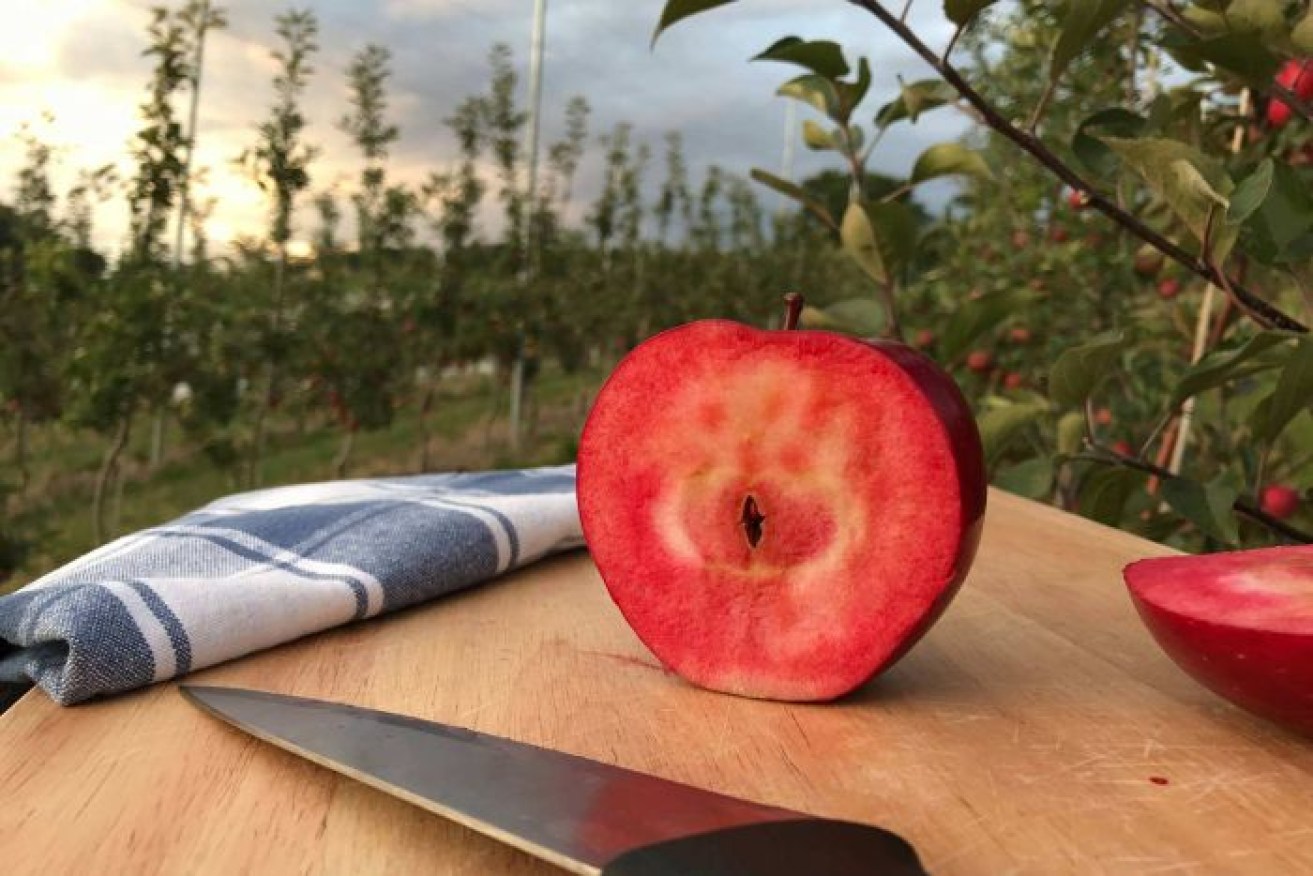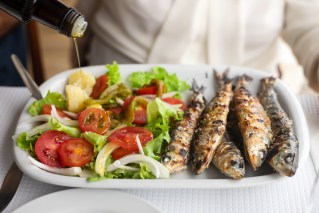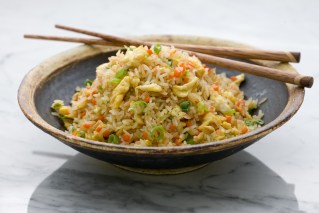Could Australia’s first red flesh apples turn around decline in apple consumption?

Could the red-fleshed 'Redlove' apples, now being rolled out, be the answer to the apple industry's woes? Photo: Lenswood Apples
It was the brainchild of a Swiss fruit breeder that looked like a cross between an apple and a tomato.
But South Australia’s apple industry is hoping Australia’s first red-fleshed apple will spark more consumers to indulge in apples, amid a perceived decline in consumption.
The first five bins of ‘Redlove’ apples have been picked this year by South Australia’s Lenswood Apples, with the product heading to restaurants across Adelaide and Sydney.
First created in a breeding program in Switzerland, the company is Australia’s sole official licensee for the unique variety.
Lenswood’s commercial manager, Hamish Franks, said the apple is now being produced by around 30 growers.
“It is just something people generally have not seen before is a red-fleshed apple,” he said.
“We will keep on getting more tree numbers out, and as those trees mature we will have more bins that will become available to market.”
Adelaide Hills chef Dean Zammit had been one of the restaurateurs using the red-fleshed apples in his dishes.
He said the colour has proven to be the main drawcard.
“The visual aspect has been a big part of it,” Mr Zammit said.
“People are not used to something so red and vibrant … it has got a bit of a different texture and flavour in there as well.”
Great red hope to overturn consumption issues
According to Horticulture Innovation Australia’s horticulture statistics, 91 per cent of households purchased apples in the year ending 2017.
But the industry said the availability of a wider selection of snacks has also underpinned a stagnating or dropping numbers of eaters.

The Redlove apples on display at their Australian launch in 2017. Photo: ABC
CEO of the Apple and Pear Growers Association of South Australia, Susie Green, said they remain unsure of the cause.
“I think there is some more work that needs to be done so we can really understand where the trends are,” she said.
Ms Green said the introduction of more unique looking and tasting varieties could be the drawcard to win back buyers.
“It is going to create some more interest and get people that perhaps traditionally would not be interested in apples, or perhaps growing tired of apples, to reinvigorate some interest,” she said.
Mr Franks agreed, saying that growers could reap the benefits amid struggles in the industry.
“The prices have been declining, and unfortunately … consumption has been declining in Australia,” he said.
Hail hampers inaugural harvest
The first harvest did not go entirely according to plan, with a freak hail storm in late 2017 wiping out millions of dollars worth of apple and pear crops in the Adelaide Hills.
With around 40 growers impacted, South Australia’s apple industry commenced a marketing campaign to encourage consumers to purchase the dinted fruit as it was safe to eat.

Hail damage across the Adelaide Hills wreaked havoc for apple and pear growers. Photo: Susie Green
Mr Franks said some of the prized variety was being sold with minor marks as a result.
“Unfortunately, Lenswood as a region got hit really hard with hail,” he said.
“But it doesn’t detract what you can do with them for cooking.”








